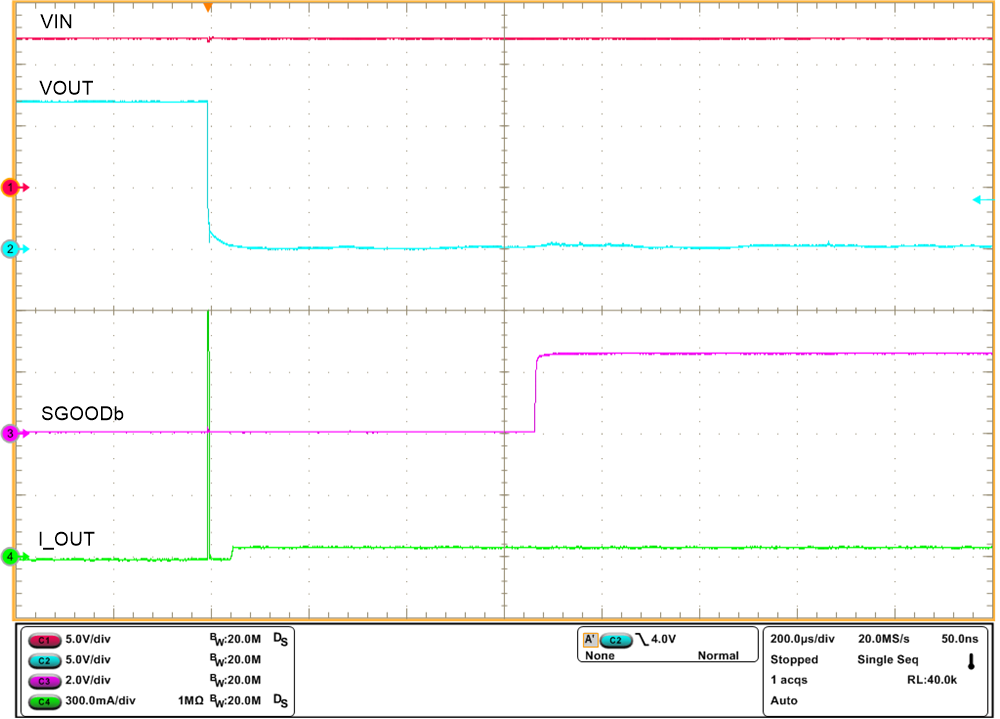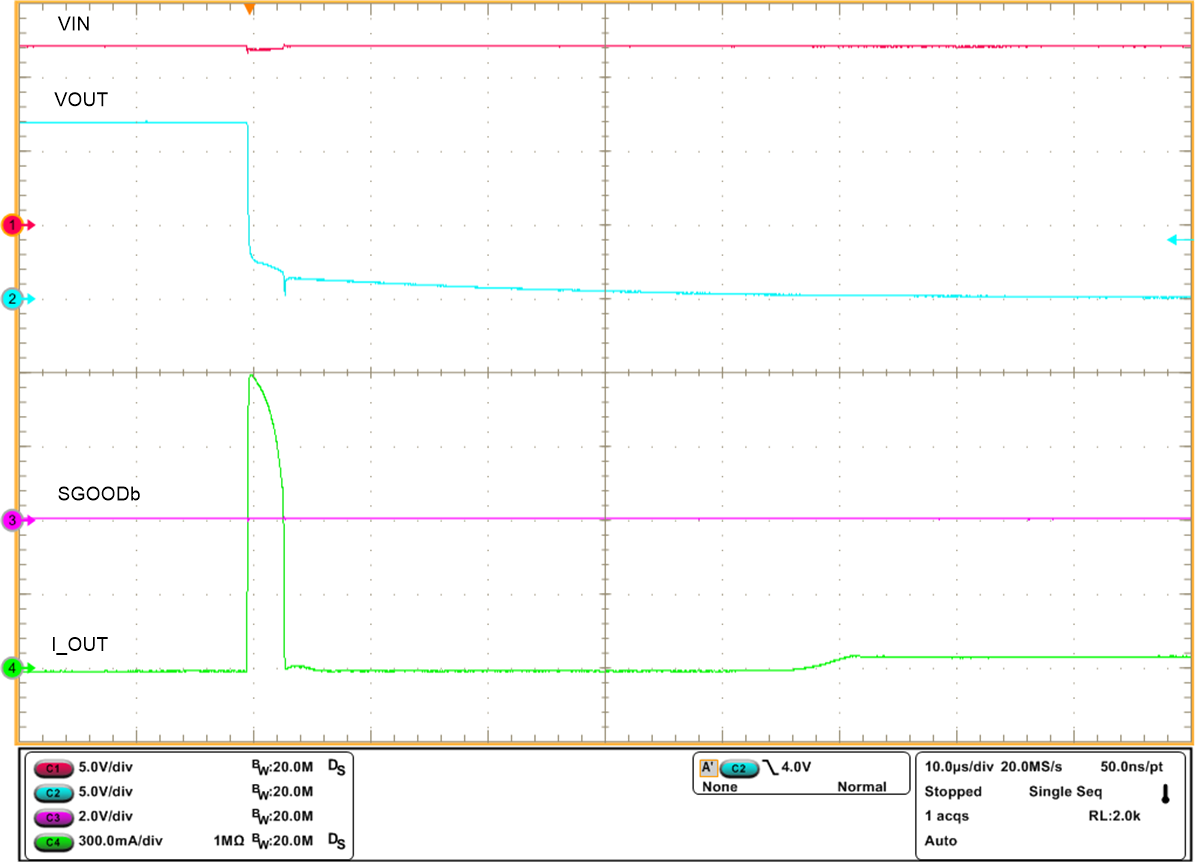SLVUBX8B October 2020 – December 2021 TPS2661
- Trademarks
- 1Introduction
- 2Description
- 3Schematic
- 4General Configurations
-
5Test Setup and Procedures
- 5.1 Overload Protection Test
- 5.2 Output Short-Circuit Test
- 5.3 Input Undervoltage Protection Test
- 5.4 Output Undervoltage Protection Test
- 5.5 Output Overvoltage Protection Test
- 5.6 TPS26612 Overload Protection Test
- 5.7 Current Limiting for VIN < –Vs
- 5.8 Surge Protection Test (Current Input, CH1)
- 5.9 Surge Protection Test (Analog Output, CH2)
- 6EVAL Board Assembly Drawings and Layout Guidelines
- 7Bill Of Materials (BoM)
- 8Revision History
5.2 Output Short-Circuit Test
Use the following instructions to perform an output short-circuit test on TPS26610 (U1):
- Set the jumper setting J4 in 2–3 position to set MODE = 180 kΩ
- Open jumper J6
- Set dual polarity regulated power supply to +15 V : 0 V : –15 V and apply the power at connector J2
- Apply a voltage of 12 V at I_IN_1
- Short the output of the device for example, I_OUT_1 to AGND_1 with a shorter cable
- Observe the waveforms using an oscilloscope
Figure 5-5 and Figure 5-6 show test waveforms of output hot-short on the TPS2661 eFuse evaluation board.
 Figure 5-5 Output Short-Circuit Response
of TPS26610 Device
Figure 5-5 Output Short-Circuit Response
of TPS26610 Device Figure 5-6 Output Short-Circuit Response
of TPS26610 Device (Zoomed)
Figure 5-6 Output Short-Circuit Response
of TPS26610 Device (Zoomed)